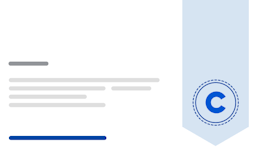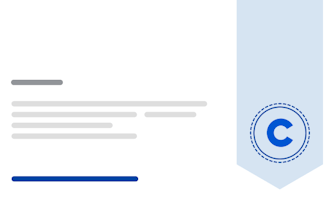The aim of this course is to introduce learners to open-source R packages that can be used to perform clinical data reporting tasks. The main emphasis of the course will be the clinical data flow from raw data (both CRF and non-CRF) to SDTM to ADaM to final outputs. While several open-source tools to complete these tasks will be introduced, the objective of this course is not to become an expert in any of these tools but rather to introduce participants to the broader concepts behind these tasks. That way the tools simply serve as an example of how the underlying concepts could be put into action in code.



Empfohlene Erfahrung
Empfohlene Erfahrung
Kompetenzen, die Sie erwerben
- Kategorie: Clinical Data Management
- Kategorie: Clinical Trials
- Kategorie: Data Transformation
- Kategorie: Technical Communication
- Kategorie: Data Integration
- Kategorie: Interactive Data Visualization
- Kategorie: Data Manipulation
- Kategorie: Data Modeling
- Kategorie: Data Processing
- Kategorie: Data Import/Export
- Kategorie: Pharmaceuticals
- Kategorie: Data Visualization
- Kategorie: R Programming
- Kategorie: Statistical Reporting
Wichtige Details

Zu Ihrem LinkedIn-Profil hinzufügen
20 Aufgaben
Erfahren Sie, wie Mitarbeiter führender Unternehmen gefragte Kompetenzen erwerben.




Erwerben Sie ein Karrierezertifikat.
Fügen Sie diese Qualifikation zur Ihrem LinkedIn-Profil oder Ihrem Lebenslauf hinzu.
Teilen Sie es in den sozialen Medien und in Ihrer Leistungsbeurteilung.


In diesem Kurs gibt es 8 Module
In this module, we will introduce this course and provide a brief outline of what you will be learning. We will provide context on clinical reporting in R and the motivation for the recent shift in industry trends for the support of open-source tools. We will describe the challenges in current statistical programming practices and the benefits of applying open-source tools, as well as provide additional resources to learn more.
Das ist alles enthalten
1 Video1 Lektüre1 Diskussionsthema
In this module, we will cover several important topics related to Phase 3 clinical trials and clinical data. We will start with a brief introduction to Phase 3 trials and discuss the type of data that is collected during these trials. Following that, we will provide an overview of two data models that are commonly used to handle clinical trial data, namely SDTM and ADaM. Next, we will delve into the process of preparing a data submission package for health authorities, with a specific focus on the Food and Drug Administration (FDA) in the United States. We will explore the requirements and guidelines for submitting clinical trial data to the FDA. Lastly, we will wrap up this module by summarizing our understanding of the clinical data flow, highlighting the key points we have covered throughout the course.
Das ist alles enthalten
6 Videos1 Lektüre1 Aufgabe
In this module, we will provide an introduction to Study Data Tabulation Model (or SDTM) by giving context and highlighting the importance of such data models on clinical trials. We will explore different SDTM data mappings for CRF and non-CRF data. Finally, we will provide an outlook on the programming of SDTMs on R.
Das ist alles enthalten
4 Videos1 Aufgabe
In this module, we explore what are analysis data model (ADaM) datasets, the 3 structures of ADaM, and how to create ADaM in R using Pharmaverse packages.
Das ist alles enthalten
16 Videos4 Lektüren4 Aufgaben
In this module, we explore ADaM and R using Pharmaverse packages, one step further. We will focus on the ADaM Occurence Data Structure known as OCCDS using the example Analysis Dataset Adverse Events (ADAE). We'll go over what an OCCDS is, Adverse Events, and how to create ADAE using {admiral} and other R Pharmaverse packages. As you may be going through this training with a hands-on approach, when working in R, please first follow the installation instructions here to ensure you are using the same R version and R packages needed for both the Training and the Quiz at the end. You may do steps 1-6 now : https://www.coursera.org/learn/hands-on-clinical-reporting-using-r/supplement/enxGp/adae-quiz-resources (copy and paste if you need to), then proceed with the training. Once you get to the quiz, then you may start from step 7 on.
Das ist alles enthalten
36 Videos2 Lektüren8 Aufgaben
In this module, we introduce the concepts of generating outputs used for regulatory purposes, and the NEST packages in particular. We show how you can use NEST effectively to create and customize your tables, listings, and graphs (TLGs) during clinical reporting and introduce the TLG-Catalog to aid output generation using our packages. We will explain the benefits of open-source and the industry collaboration efforts on clinical reporting.
Das ist alles enthalten
36 Videos2 Aufgaben
In this module we will discuss benefits of of using interactive data displays for clinical reporting. We will introduce the teal family of R packages and become familiar with the key features this framework offers. Finally, we will learn how to develop a production level interactive application using teal modules for data review, safety and efficacy analyses.
Das ist alles enthalten
26 Videos1 Lektüre4 Aufgaben
In this final module we will briefly review the course and suggest next steps in your learning journey.
Das ist alles enthalten
1 Video
Dozenten



von
Empfohlen, wenn Sie sich für Data Analysis interessieren


University of Colorado System


Johns Hopkins University
Warum entscheiden sich Menschen für Coursera für ihre Karriere?







Neue Karrieremöglichkeiten mit Coursera Plus
Unbegrenzter Zugang zu 10,000+ Weltklasse-Kursen, praktischen Projekten und berufsqualifizierenden Zertifikatsprogrammen - alles in Ihrem Abonnement enthalten

Bringen Sie Ihre Karriere mit einem Online-Abschluss voran.
Erwerben Sie einen Abschluss von erstklassigen Universitäten – 100 % online

Schließen Sie sich mehr als 3.400 Unternehmen in aller Welt an, die sich für Coursera for Business entschieden haben.
Schulen Sie Ihre Mitarbeiter*innen, um sich in der digitalen Wirtschaft zu behaupten.
Häufig gestellte Fragen
Access to lectures and assignments depends on your type of enrollment. If you take a course in audit mode, you will be able to see most course materials for free. To access graded assignments and to earn a Certificate, you will need to purchase the Certificate experience, during or after your audit. If you don't see the audit option:
The course may not offer an audit option. You can try a Free Trial instead, or apply for Financial Aid.
The course may offer 'Full Course, No Certificate' instead. This option lets you see all course materials, submit required assessments, and get a final grade. This also means that you will not be able to purchase a Certificate experience.
When you purchase a Certificate you get access to all course materials, including graded assignments. Upon completing the course, your electronic Certificate will be added to your Accomplishments page - from there, you can print your Certificate or add it to your LinkedIn profile. If you only want to read and view the course content, you can audit the course for free.
You will be eligible for a full refund until two weeks after your payment date, or (for courses that have just launched) until two weeks after the first session of the course begins, whichever is later. You cannot receive a refund once you’ve earned a Course Certificate, even if you complete the course within the two-week refund period. See our full refund policy.




 enthalten
enthalten




